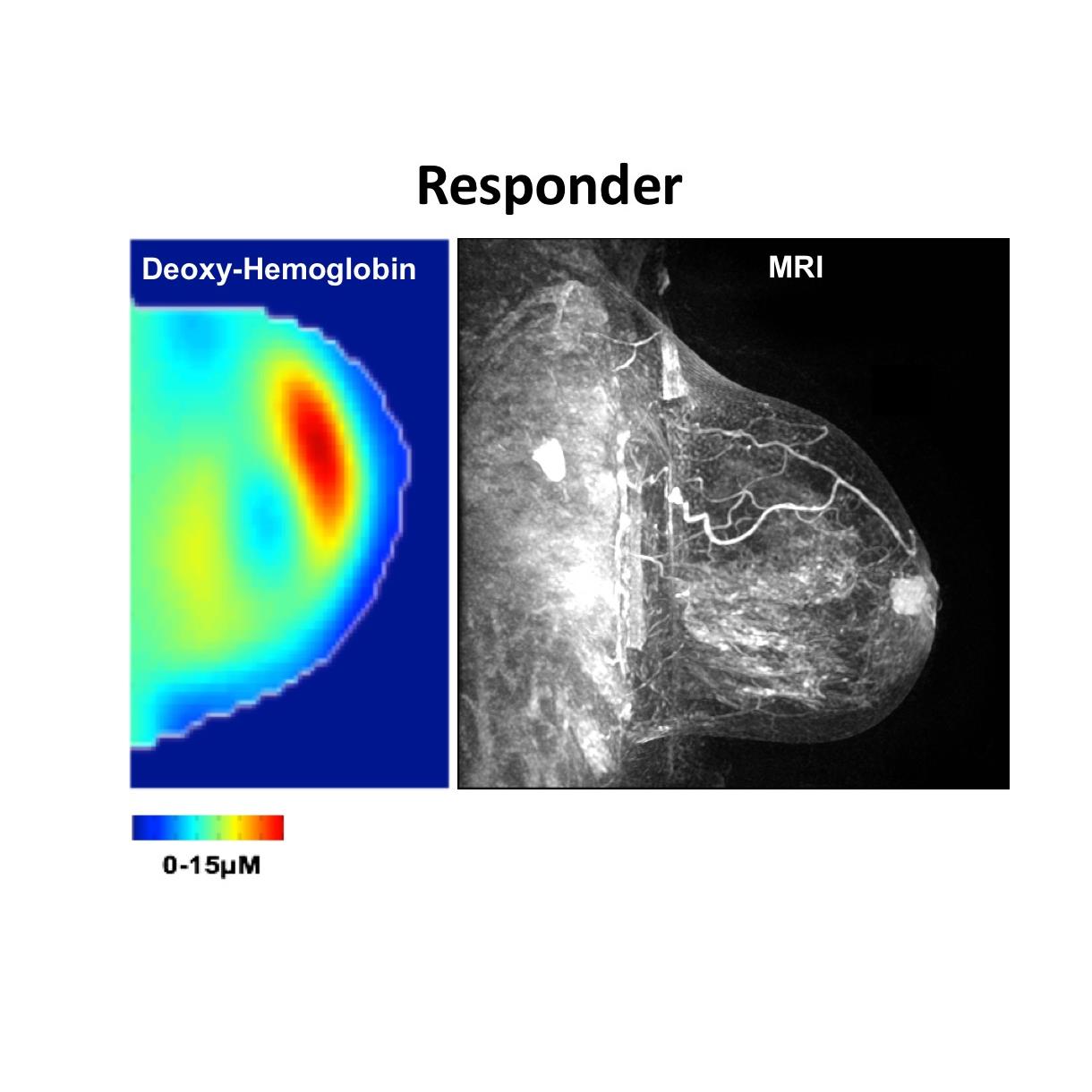
Thanks to advances in imaging, oncologists may one day be able to determine if a patient responds to chemotherapy before receiving treatment. A recent study by a TFRI-funded team has shown that diffuse optical spectroscopic (DOS) texture features can predict breast cancer response to neoadjuvant chemotherapy (NAC) in locally advanced breast cancer patients before therapy even begins.
Led by Dr. Greg Czarnota (Sunnybrook Health Sciences Centre, Ontario), and published in The British Journal of Cancer (April 2017, Dr. William Tran first author), the finding has the potential to guide treatment, improve breast cancer therapeutics, and may even improve overall disease-free survival. Breast cancer is the second leading cause of cancer-related death in women, and nearly 20 per cent of diagnoses are of locally advanced breast cancer – with only half of patients surviving beyond five years.
Previous research by Dr. Czarnota’s team demonstrated that DOS imaging was capable of monitoring response to neoadjuvant chemotherapy in patients with locally advanced breast cancer. In the present study, researchers set out to evaluate texture features of pre-treatment DOS maps as a way of predicting patient response to NAC.
Thirty-seven locally advanced breast cancer patients with a median age of 50 were identified, imaged before treatment and categorized as either a responder or a non-responder based on ultimate pathological data. Breast tissue parametric maps were constructed and texture analyses were performed based on grey-level co-occurrence matrices for feature extraction.
The results were impressive: for the first time, it was demonstrated that textural heterogeneities in DOS measures of haemoglobin and oxygen content in breast tumours predict NAC response with high accuracy. DOS-based textural parametrics show significant potential as a way of measuring baseline tumour heterogeneity, as well as for markers to measure patient response to chemotherapy treatment. These markers could help personalize medicine for women with breast cancer, and may prevent those who will not respond to therapy from undergoing cytotoxic chemotherapy, guiding these patients instead to alternative treatments.
Study: Predicting breast cancer response to neoadjuvant chemotherapy using pre-treatment diffuse optical spectroscopic texture analysis
Authors: William T. Tran, Mehrdad J. Gangeh, Lakshmanan Sannachi, Lee Chin, Elyse Watkins, Silvio G Bruni, Rashin Fallah Rastegar, Belinda Curpen, Maureen Trudeau, Sonal Gandhi, Martin Yaffe, Elzbieta Slodkowska, Charmaine Childs, Ali Sadeghi-Naini and Gregory J. Czarnota.
Funding: This project was funded by the Terry Fox Research Institute, Canada.
TFRI LINKS, Summer 2017